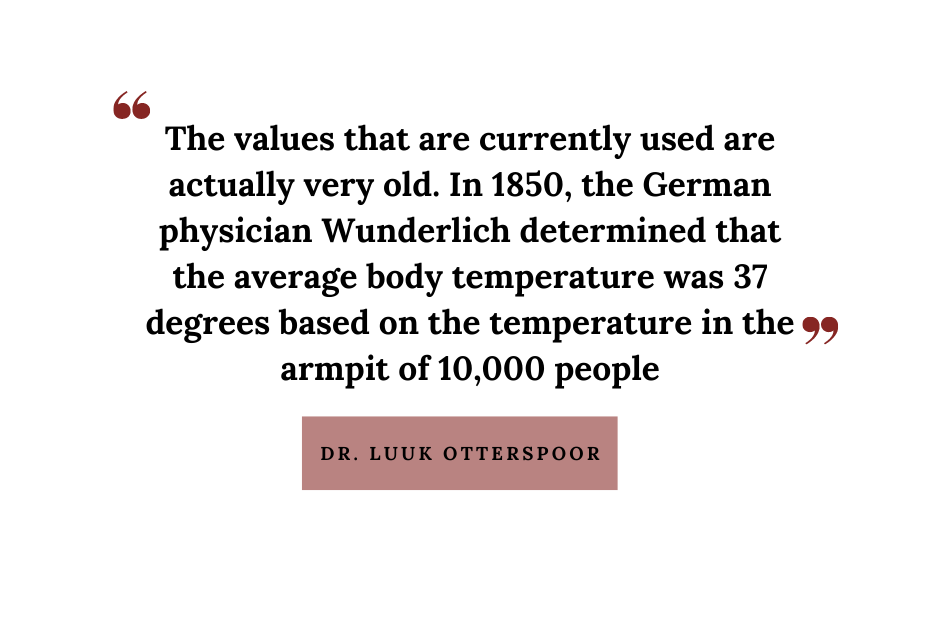Research shows that our average body temperature has dropped over the past decade, leading scientists to call for a new definition for fever.
"Many people, including doctors, have it in their heads that the average body temperature of humans is 37 degrees Celsius, but that's not true," says cardiologist Luuk Otterspoor. He organises a conference in the Dutch city of Eindhoven where doctors from all over the world come together to discuss whether they should use other values in the treatment of patients.
"The values that are currently used are actually very old. In 1850, the German physician Wunderlich determined that the average body temperature was 37 degrees based on the temperature in the armpit of 10,000 people."
But that measurement is outdated because 150 years ago there were different living conditions than there are now.
"There was no good hygiene at that time. A large number of people had underlying chronic diseases, such as tuberculosis and autoimmune diseases, which caused them to have a higher body temperature. Life expectancy was also lower then."
Over the course of the twentieth century, people have become healthier, leading to a lower body temperature. Research shows that the average temperature has been falling in the last ten years.
"With 100,000 measurements, it has been determined that the average is around 36.4 degrees Celsius,” says Otterspoor. “In addition, the body temperature drops by 0.03 degrees every ten years."
What consequences does this have for doctors? Doctors and experts will discuss this during the conference about cooling and heating in the treatment of patients. Among other things, they will discuss whether doctors should use new values in the treatment of patients.
The fact that the average body temperature is lower also has consequences for fever.
"There needs to be a redefinition of fever, but it will be very difficult to determine a new fever temperature," Otterspoor admits.
Related News
- Dementia: New music platform aims to help slow progress among elderly
- Nutri-Score: how beneficial is it really?
- One in five people not aware of patients' rights
The normal body temperature can be measured very easily, but fever turns out to be much more difficult to determine. "It's a very difficult question that has different answers. In the hospital, fever is defined as a temperature of 38.4 or higher. But for general practitioners and at home, that is more difficult to determine."
Several factors make it difficult to establish a tipping point for fever.
"The morning temperature is lower than the evening temperature. Menstruating women have a higher body temperature, and the elderly sometimes have no fever at all. Perhaps a target temperature can be determined per age group, but that is quite complicated," says Otterspoor.


